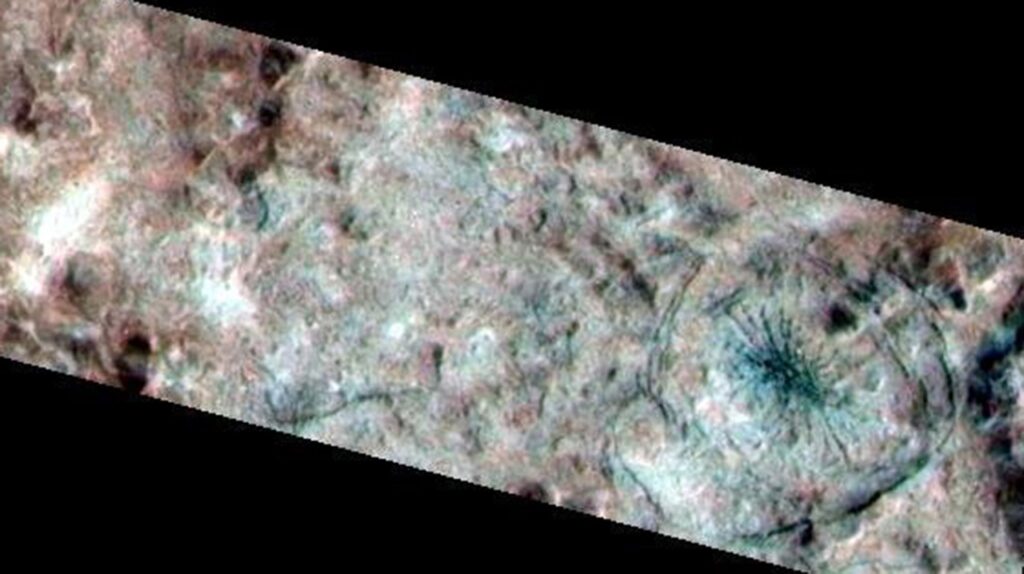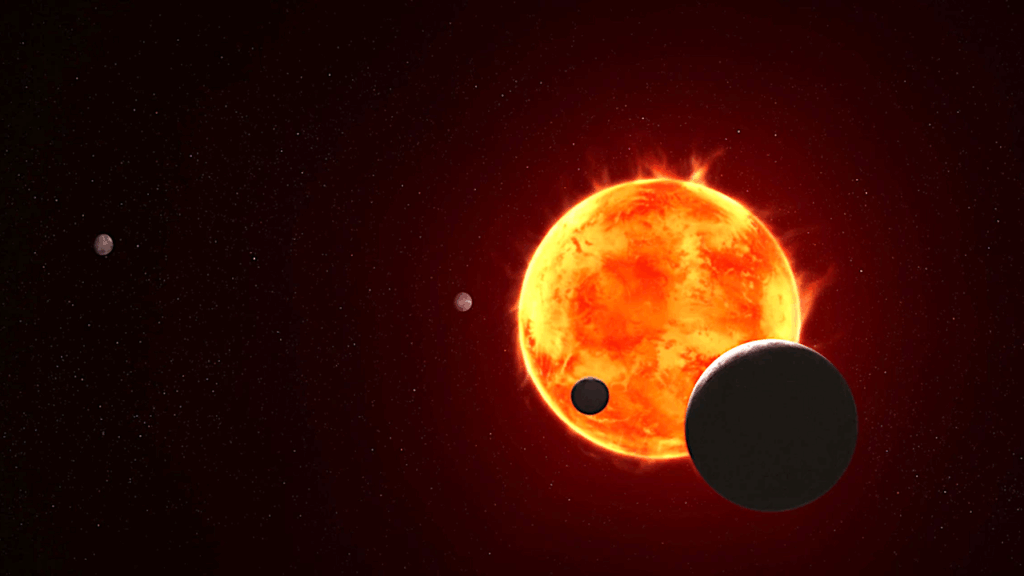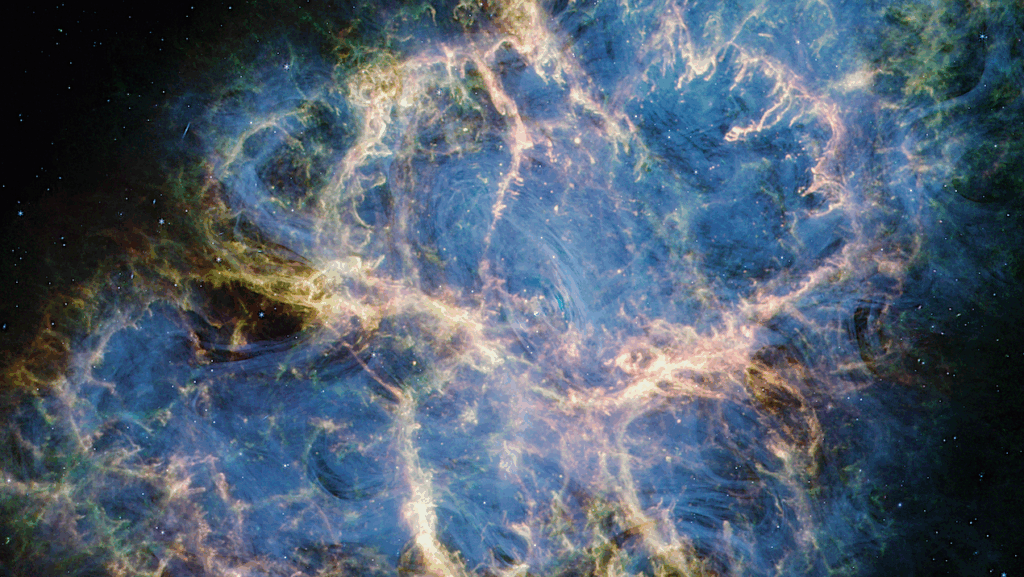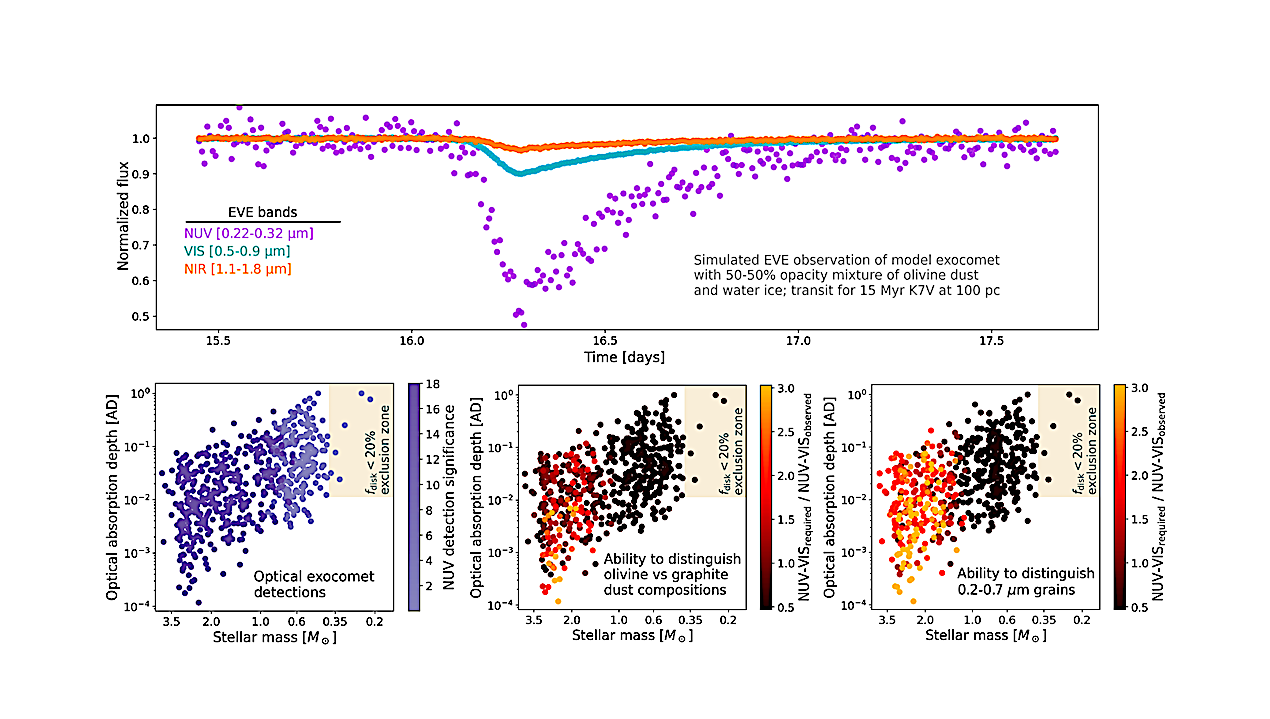Now Reading: Eruption Column Modelling Of Explosive Volcanism On Venus
-
01
Eruption Column Modelling Of Explosive Volcanism On Venus
Eruption Column Modelling Of Explosive Volcanism On Venus
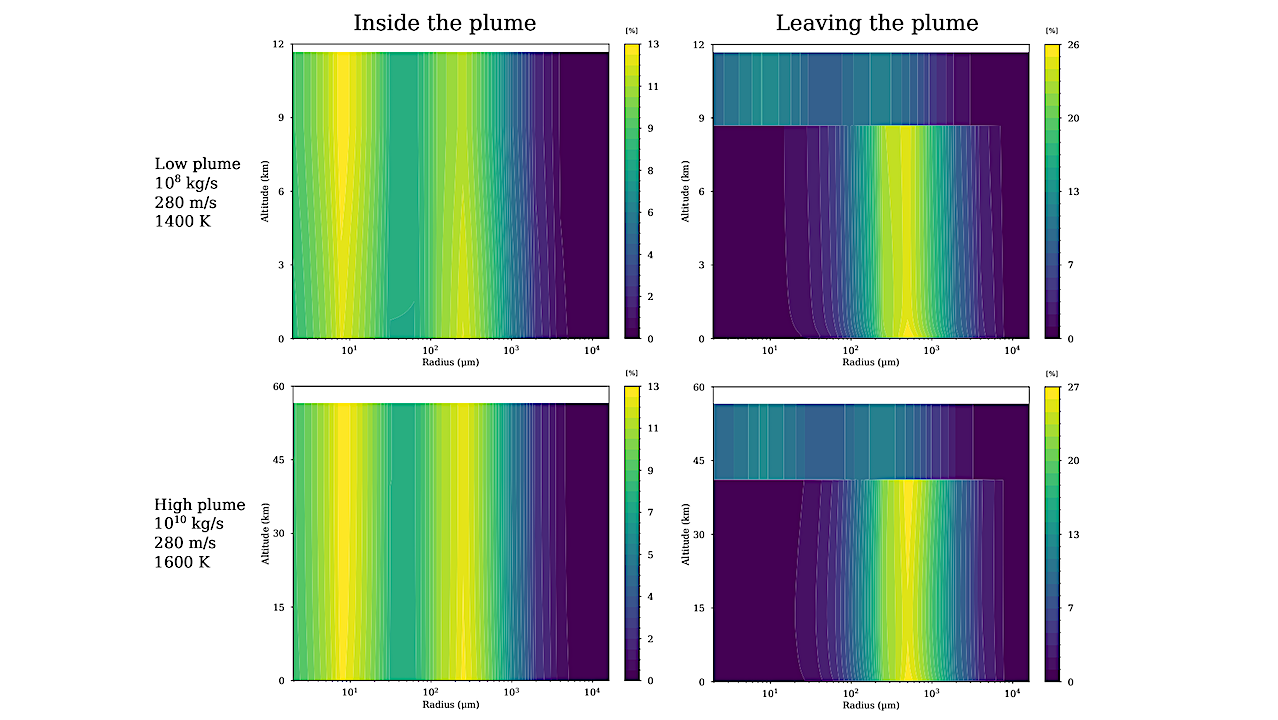

Mass distribution inside the plume (left) and leaving the plume (right) for the different particle sizes along the plume vertical extent for the low (top) and high (bottom) plume cases. Both cases are at the Equator with wind shear and for an atmospheric heat capacity varying with temperature and a pyroclast heat capacity of 920 J kg−1 K−1. — astro-ph.EP
Volcanism on Venus has never been directly observed, but several measurements indicate present-day activity. Volcanism could potentially play a role in climatic processes on Venus, especially in the sulfur cycle like on Earth.
Observation of volcanic activity is the primary objective of future Venus spacecraft. However, there are many unknowns regarding its Venusian characteristics, like the condition at the vent, the volatile content and composition. Past modelling efforts have only studied explosive volcanic plume propagation over a limited range of flow parameters at the vent and in an idealised Venus atmospheric configuration.
We propose to use the 1D FPLUME volcanic plume model in a realistic Venusian environment. In similar Venusian conditions, the height of the plume is consistent with past modelling. The present study shows that explosive volcanism would preferably reach 15 km of altitude. Under certain conditions, plumes are able to reach the VenSpec-H tropospheric altitude range of observations and even the 45 km cloud floor.
For the first time, the impact of wind was quantified, and the super-rotating winds have a substantial impact by plume-bending of reducing the height of plumes. Contrary to the Earth, the atmospheric heat capacity depends greatly on temperature, and will disadvantage lower plumes and allow larger plumes to propagate at higher altitudes.
The high latitude atmospheric environment, due to the thermal profile and weaker winds, is favorable to plumes reaching higher altitudes.
Maxence Lefèvre, Matteo Cerminara, Antonio Costa
Comments: 23 pages, 12 figures, 2 tables
Subjects: Earth and Planetary Astrophysics (astro-ph.EP); Atmospheric and Oceanic Physics (physics.ao-ph); Geophysics (physics.geo-ph)
Cite as: arXiv:2510.15492 [astro-ph.EP] (or arXiv:2510.15492v1 [astro-ph.EP] for this version)
https://doi.org/10.48550/arXiv.2510.15492
Focus to learn more
Journal reference: Journal of Geophysical Research: Planets, 130, e2025JE009320
Related DOI:
https://doi.org/10.1029/2025JE009320
Focus to learn more
Submission history
From: Maxence Lefèvre
[v1] Fri, 17 Oct 2025 10:04:13 UTC (924 KB)
https://arxiv.org/abs/2510.15492
Astrobiology, Astrogeology,
Stay Informed With the Latest & Most Important News
-
 012024 in Review: Highlights from NASA in Silicon Valley
012024 in Review: Highlights from NASA in Silicon Valley -
 02Panasonic Leica Summilux DG 15mm f/1.7 ASPH review
02Panasonic Leica Summilux DG 15mm f/1.7 ASPH review -
 03How New NASA, India Earth Satellite NISAR Will See Earth
03How New NASA, India Earth Satellite NISAR Will See Earth -
 04And Thus Begins A New Year For Life On Earth
04And Thus Begins A New Year For Life On Earth -
 05Astronomy Activation Ambassadors: A New Era
05Astronomy Activation Ambassadors: A New Era -
 06From Polymerization-Enabled Folding and Assembly to Chemical Evolution: Key Processes for Emergence of Functional Polymers in the Origin of Life
06From Polymerization-Enabled Folding and Assembly to Chemical Evolution: Key Processes for Emergence of Functional Polymers in the Origin of Life -
07SpaceX launch surge helps set new global launch record in 2024












